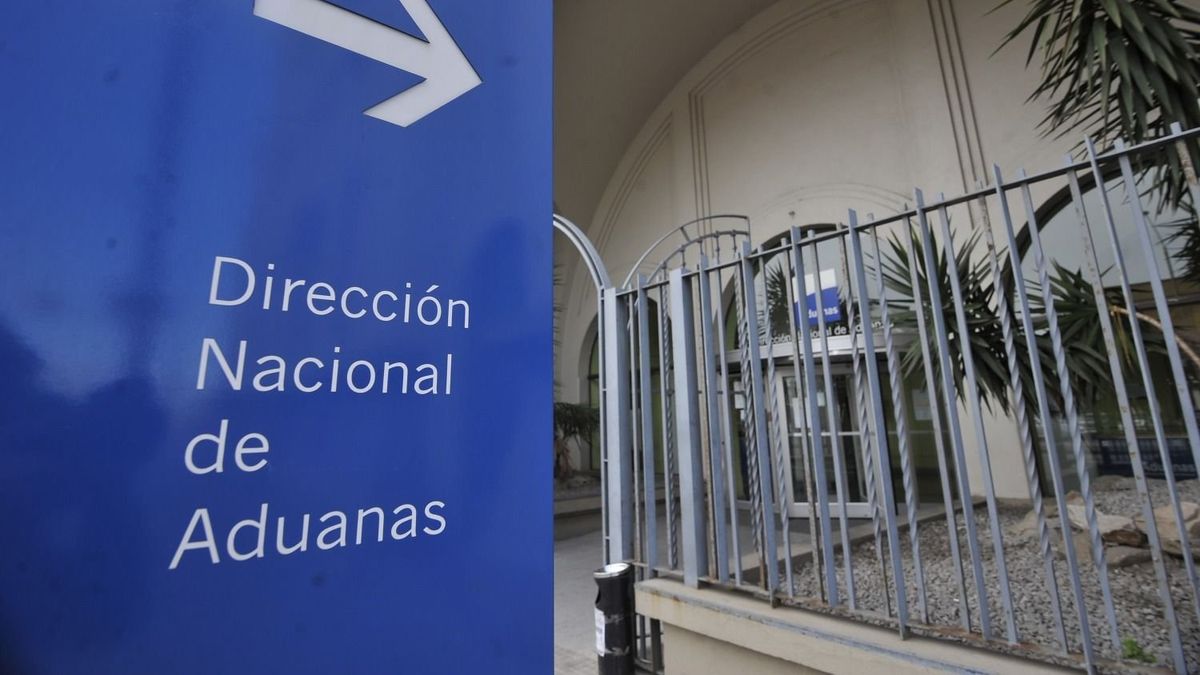He foreign trade of Uruguay was paralyzed last night when the Association of Customs Officials (AFA) carried out forceful measures and announced as many for next week, which will affect operations in the Carrasco Airport and in receptors of the country’s coast.
were alone four hours, from 19 to 23, but Uruguayan foreign trade —which is not going through its best moment, at least, compared to a great previous year— was paralyzed by the beginning of the fight plan that the customs officials plan to carry out throughout the week. According to the president of the union, Roberto Valdivieso, a Underlined, the actions will be “surprising and in place to be determined”, with the aim of making visible the claims of the sector.
The AFA claims for Better work conditions and that they are adjusted to the normative, especially in matters such as the payment of night shifts under the protection of the Public Official Statutesalary compensation for surveillance tasks, competitions for promotion and respect for the administrative career, entry of personnel, salary gap and reduction of the working day.
Valdivieso affirmed that the demands of the workers come from the fact that, in 2013, the government of Jose Mujica approved decree 204 that established the organizational restructuring of the National Customs Directorate (DNA) and granted the national director the power to carry out up to 80 direct staff appointments without taking into account the administrative scale.
The union appealed to the Administrative Litigation Court (TCA) and in 2016 the TCA agreed with the union. That year, the administration of tabare vazquez issued a new decree, 256, which was also appealed and resolved in favor of the AFA in 2019. The government then published decree 315, also contested. Currently, Decree 217 of 2022 is in force, which establishes that the national director can make up to 14 direct appointments and that 56 positions are by competition.
Valdivieso described the negotiations between the AFA and the DNA as “the emporium of good intentions, but nothing has been finalized so far”. “The signals are very poor, we are giving in as a union,” he said, and demanded responses from the government.
The idea of the union with the measurements is “make people feel unemployed” and does not rule out joint actions with the Argentine customs, but claims the “path of understanding” to reach a solution to their claims.
Labor conflict on the rise
The labor conflict was one of the axes that marked the labor market during the first half of the year, according to the Economic Bulletin of the Chamber of Commerce and Services of Uruguay (CCSUy)to the point of doubling the total average of last year.
The CCSUy published the Economic Bulletin on the Labor Market in the country corresponding to the first semester of 2023, and the level of labor conflict was one of the most striking points so far this year in this area. In this regard, and from Global Labor Conflict Index (ICLG) prepared by the Department of Social Psychology and Work of the Catholic University of Uruguay (UCU)a significant increase in problems in the workplace was observed.
This index relates the days and hours of work lost due to conflicts with the days and hours of work that normally would have been possible to work. Likewise, it includes the sectoral conflicts of branch and company, and the general strikes.
Thus, the ICLG corresponding to the first half of the year was more than double from the 2022 average, and almost ten times greater than the average of 2020, the first year of the current government —although it must be taken into account that it was the year most marked by the health crisis due to the covid-19 pandemic. According to the CCSUy, labor conflict is a marked trend of the last months.
The increase in the index was mainly due to the general strikes called by the PIT-CNT, which so far this year have already been four. Considering these strikes, between January 1 and June 30, there were 60 conflicts with interruption of activities for which 1,063,914 working days were lost. 1,198,385 workers were involved in these measures.
Meanwhile, the trend is not expected to change for the second half of the year. Rather, quite the opposite: to the scenario already marked from the start for being a pre-election year, there are several conflicts that are currently taking place, as well as potentially conflictive situations in the workplace.
Source: Ambito




